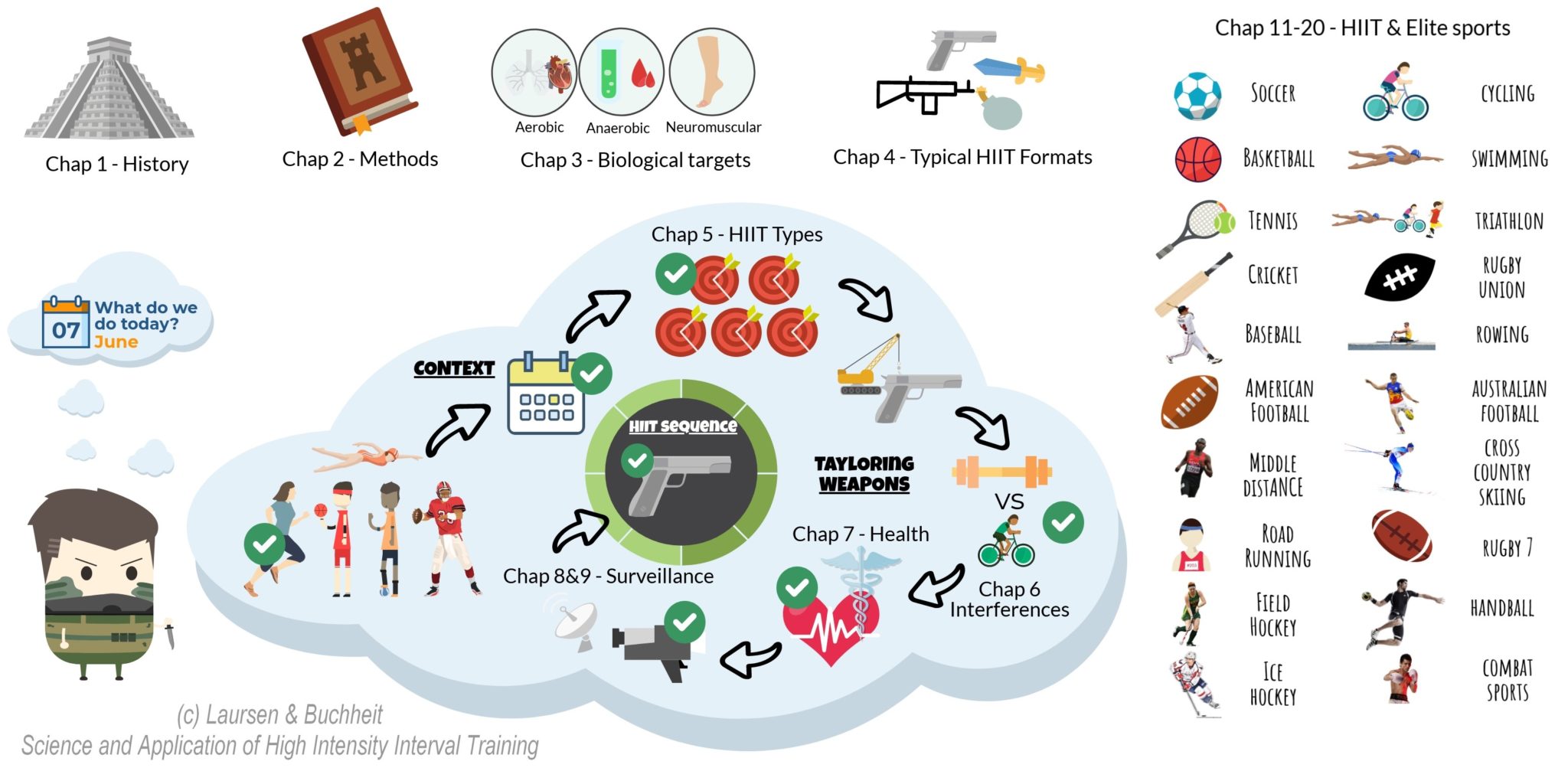Science and Application of High Intensity Interval Training – The book
A preview to: The Science and Application of High Intensity Interval Training
Release date: towards the end of 2018

Most of us have heard of high-intensity interval training (HIIT) – that so called time efficient training strategy we should use to improve our cardiorespiratory and metabolic health and performance. Today in fact, HIIT is considered the highest interest topic in our field. But as I’ve written, our ability to link much of the sport science research outputs derived from our academic institutions, including HIIT, into today’s elite sport practice, can often be considered limited by those it matters most to, the coaches and athletes in the trenches of high performance sport.
This past year, my colleague Paul Laursen and I have taken on the project of working towards putting a book together on the topic of HIIT and its real world application in high performance sport. The initiative stems from the popularity of a two-part literature review we wrote on the topic back in 2013 (Part I & Part II, see also the 2013 UKSCA presentation below). As shown in the infographic, Science and application of high-intensity interval training takes the reader though the history of HIIT and its traditional methods, before diving into our scientific understanding of how it can be used to gain a response in certain biological targets of importance for sport performance. From there, we break down the key components of an HIIT session (intensity, duration, recovery, etc) to learn how we can manipulate these factors to form different HIIT formats, or what we term our ‘weapons’. Our HIIT weapons can be further refined to hit the biological targets of importance, in line with the sport type, the individual, and the all-important sport context. Other important considerations covered include concurrent strength programming and health aspects, as well as load monitoring and individual response surveillance.
Most importantly, we are privileged to have gained the generous contributions of practitioners embedded within 20 high profile individual and team-based sports, who tell us precisely how they apply the science of HIIT in their practice to maximise athlete and sport performance. The detail they offer will leave the enthusiastic coach and sport scientist breathless. It is our hope that the work will inspire a future generation of sport scientists to think outside the box when it comes to high performance sport science research and HIIT application, and critically, narrow today’s void between science and practice.
Videos from the 2013 UKSCA Conference
(many thanks to them for making the link available to all)
Nb: White man before Yann Le Meur‘s Infographics 🙂




